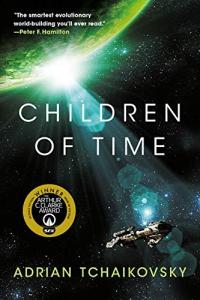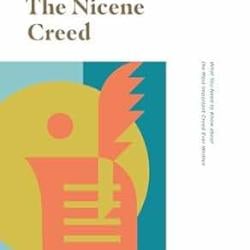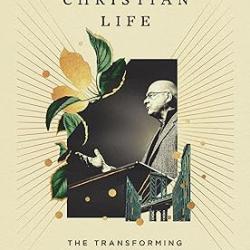
What would history have looked like if we were genetically modified spiders instead of mammals? Having asked the question we of course have to have an answer, and Adrian Tchiakovsky gives us just that in his sci-fi novel Children of Time. If that’s not enough to get you to read it, frankly I’m not sure anything can be done for you. But if it helps, it’s also a fun story that’s well-written and thoughtful.
The plot is, well, it’s hard to explain (again: history through the multiple eyes of spiders). The idea is that in a far-flung future, human beings are terraforming new worlds and experimenting with a nanovirus that will speed up the evolution of monkeys so that we will have a world full of beings not-quite-sentient but cheerfully willing to serve in the mundane tasks required by human beings. Things go wrong, however, and civil war breaks out destroying the monkeys intended for the recently terraformed planet and leaving the scientist in charge of the project with her minded hooked to a stasis pod orbiting the planet. Millennia later, one last ship is cobbled together from the wreckage of a dark-age Earth with the rest of humanity in frozen sleep, hoping that one of the fabled terraformed planets will be out there for mankind to get a second chance. In the millennia between the collapse of the human star-faring civilization and the arrival of the last human ship, the nanovirus has worked an accelerated evolution on the spider population of the planet, resulting in an advanced society that makes contact with the scientist in her orbiting stasis pod. When the ship arrives at the spider planet, the question becomes which species will survive?
Like I said, it’s hard to explain. What we get along the way is an overview of major moments in spider history (the discovery of their version of the printing press, contact with “God”, space flight, etc) clearly based on human history but from the perspective of a species that is both like and unlike humanity–and which is loosely made in our image. Like humanity, the spiders fight against the worst impulses of their nature (in this case, killing and devouring males after procreation). The nanovirus helps them in this pursuit, gently encouraging and nudging the spiders to excel rather than to give in to violence.
[spoiler alert] When the humans do finally arrive, the solution the spiders settle on (over the objections of the scientist from her ancient orbital pod) is to inject humans with the nanovirus so that they can feel a bit of kinship. The nanovirus enables each side to see the ‘human’ in the other, and be able to set aside any instinctive fears.
There’s a lot going on in this book that should be of interest to Christians. Obviously we’re not going to believe that God has misunderstood us or that creation went a way that He didn’t plan, but we also do have the idea that there is something (or rather Someone) who comes from our Creator who indwells us, and who helps us to overcome our worst instincts and get along despite apparent external differences. The Holy Spirit as nanovirus is an interesting idea–or if we want to take that more broadly and read it as “religion as nanovirus” there’s still something interesting here.
Likewise the exploration of key historical moments in fast-forward is also interesting. I’m not sold on how some events are interpreted, but I don’t have to be sold on everything to tell you that Children of Time is a fun, thoughtful, read and well worth your attention.
Dr. Coyle Neal is co-host of the City of Man Podcast an Amazon Associate (which is linked in this blog), and an Associate Professor of Political Science at Southwest Baptist University in Bolivar, MO












